https://www.youtube.com/watch?v=YkJxWtTPyb0
Samsung's First Tablet - The $5,000 PenMaster From 1992!
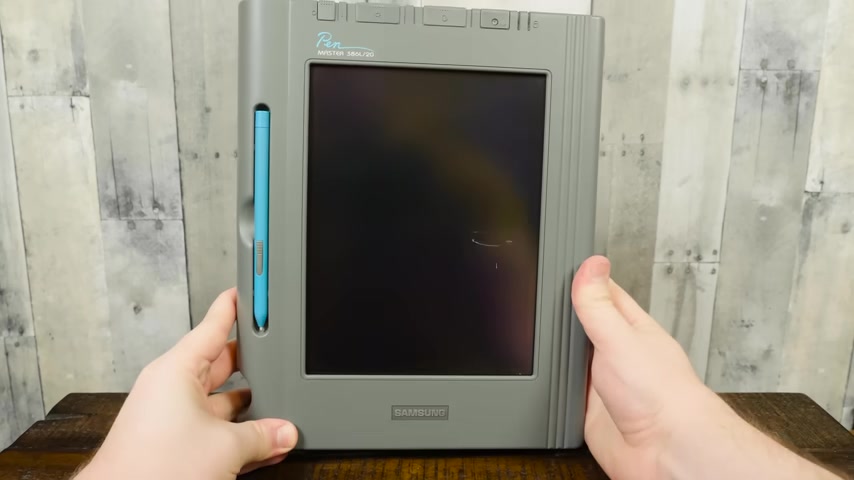
Greetings and welcome to an L G R thing .
And this lovely device is the Samsung P Master 3 86 S L 20 A touch screen tablet computer from 1992 .
Back then , this started at a price of $3995 with costs heading upwards of $5000 for a fully specked example with additional storage .
But being that this was Samsung first tablet computer on the market and one that packed an impressive 3 86 MS dos PC inside , it's little wonder that it cost half as much as a 1992 GEO storm back then .
Shout out to Lorne , by the way , an L G R viewer who sent this example for me to review these are not common machines whatsoever , especially this particular model from Samsung .
And he also included some Chicago Pop .
What's this caramel and cheese ?
Mm .
Now that's some tasty stuff .
Yeah .
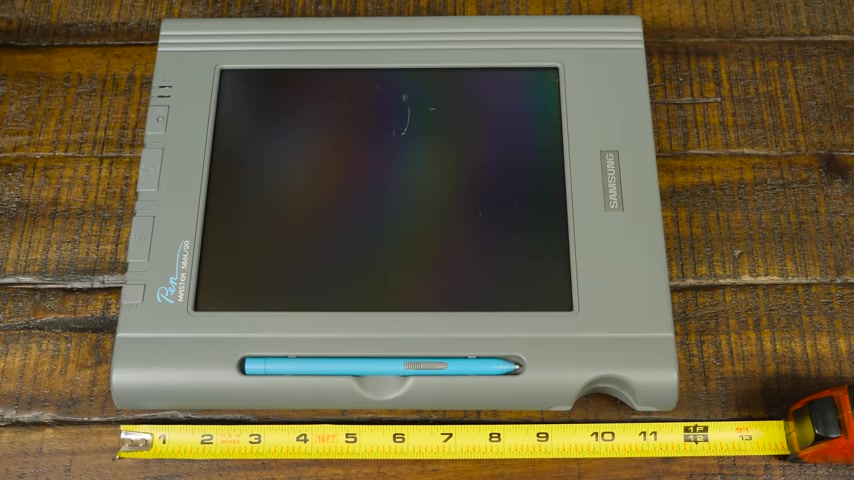
But yeah , anyway , the Pin master , it's pretty large by today's tablet standards measuring 11.5 by 9.5 by 1.8 inches and weighing in at £5.5 or 2.5 kg with the battery installed .
But back when it was one of the brand new PIN based computer systems debuting at the 1991 fall com .
So this was darned impressive , so much so that portable computing pioneer grid systems licensed the design from Samsung and sold their own slightly better known variant called the grid pad S L believe it or not grid and Samsung weren't the only companies releasing cutting edge tablets in the early nineties , either the pin master was introduced right alongside offerings from Momenta tele pad and doin technology .
If that last one sounds familiar , perhaps you've seen my previous video about the dolphin D T R one that was a pretty similar tablet PC in many respects , even running the same base operating environment as the pen master .
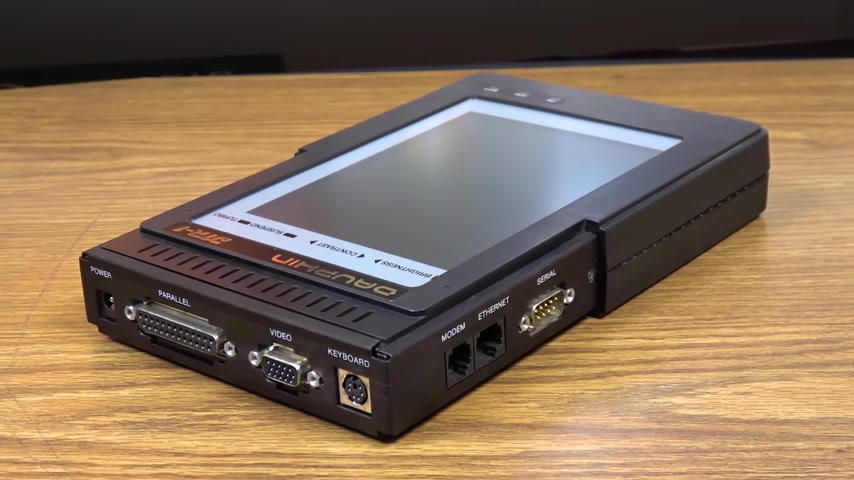
Yet it didn't hit the market until a year later in 1993 on the time scale of early nineties computing that may as well be an eternity .
So let's take a look at what Samsung was doing in these earlier days of touchscreen tablet P CS .
As its name implies , the pen master comes with a pen suitable for all manner of mastering outfitted in a blue plastic body , matching the word pen in the logo .
It has a single button on the side for right clicking and the pen position can even be detected a centimeter away from the surface of the tablet screen .
So yeah , the pen is battery powered and was pretty advanced for the time with replacements from Samsung costing 80 bucks each .
Naturally .
This is intended work with the resistive touchscreen display here .
A back lit 10 inch monochrome LCD panel that displays VGA in up to 32 shades of gray .
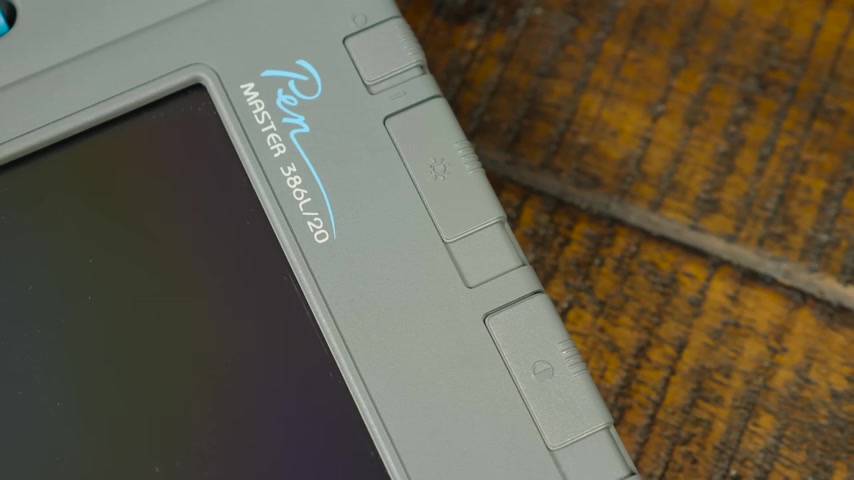
Coincidentally the title of my upcoming romance novel and along the top of the device , there's an assortment of stubby sliding switches including the power brightness and contrast controls , a tiny reset button and led indicators for power and hard disk activity .
A majority of the IO functionality is found on right hand side with a spot for the 17.5 volt DC power brick A P S two keyboard port nine pin serial port , Samsung floppy drive interface , parallel port V G A video output and a 24 100 V P S data fax modem around the left hand side of the unit is where you get the single PC M CIA slot for expansion cards on top is where the rechargeable 1.7 amp hour battery is installed , which originally boasted a two hour battery life and along the bottom edge is absolutely nothing .
Just a nice rounded butt and underneath is all the expected model number and F C C text as well as four rubber feet signaling how it's built for plopping down on a flat surface .
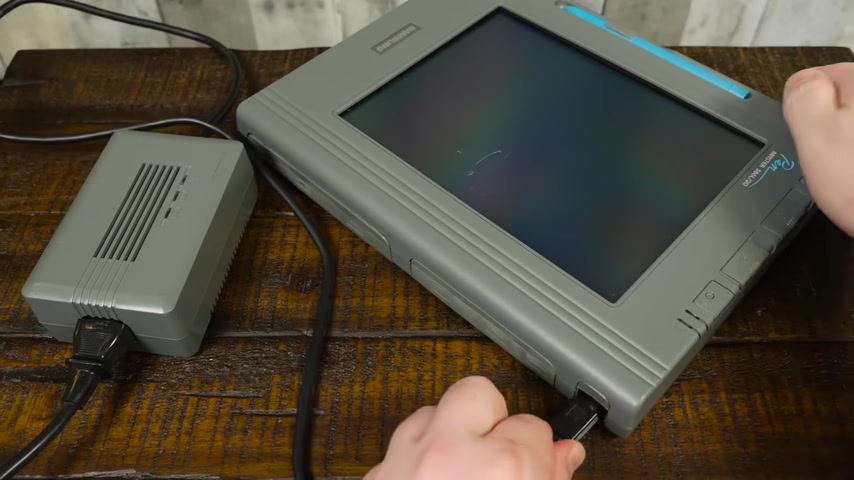
Yeah , at £5.5 and a couple inches thick .
It's just not the type of tablet you want to hold in your hands for very long .
However , you choose to set it up though .
The main thing to do is make sure it's charged up or plugged in so you can get it turned on at this point .
The pen master boots up like any PC of the time period performs the standard hardware checks and begins loading the operating system .
Go .
Corporations pinpoint and C IC .
Pens were both available as options from Samsung .
But this one came with Microsoft Windows for pen computing version 1.0 based on Windows 3.1 for desktops .
It'll feel darn familiar to anyone used to that with the main additions being the Microsoft Pin tools applications , things like the pen palette for handwriting recognition , the training program for helping you understand your sloppy handwriting and the on screen keyboard for when all other inputs inevitably fall flat on their face .
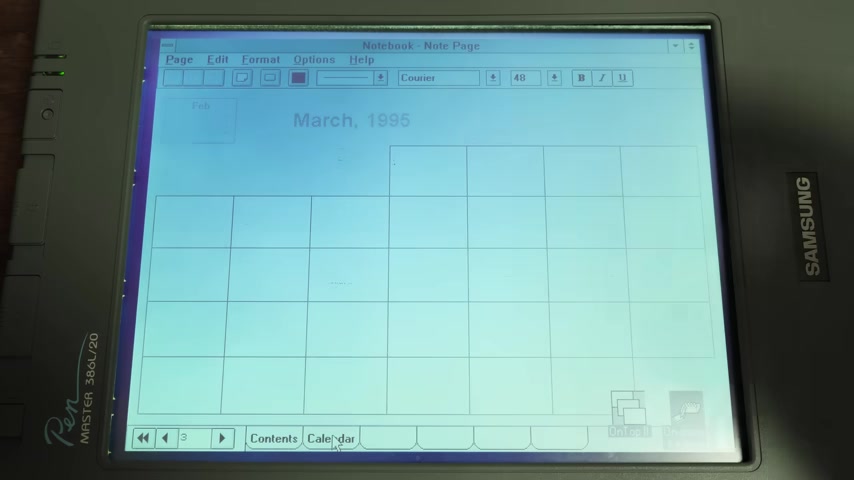
There's also the handy notebook application much more involved than good old note pad .
This is meant to take the place of a personal organizer and rid your life of pesky paper calendars .
Once and for all in theory .
Yeah , all this handwriting recognition stuff with Windows for pen computing never really struck me as something I'd want to use for anything more than a few minutes .
Once the novelty of it actually recognizing a few simple words wears off , you're left struggling with the awkwardness of everything else .
Even after training , the software errors are commonplace and the fact that the remainder of the windows interface is basically unchanged from the desktop PC version doesn't do it any favors in terms of usability .
At the same time though , this was 1992 and the pen master was like a glimpse into the future .
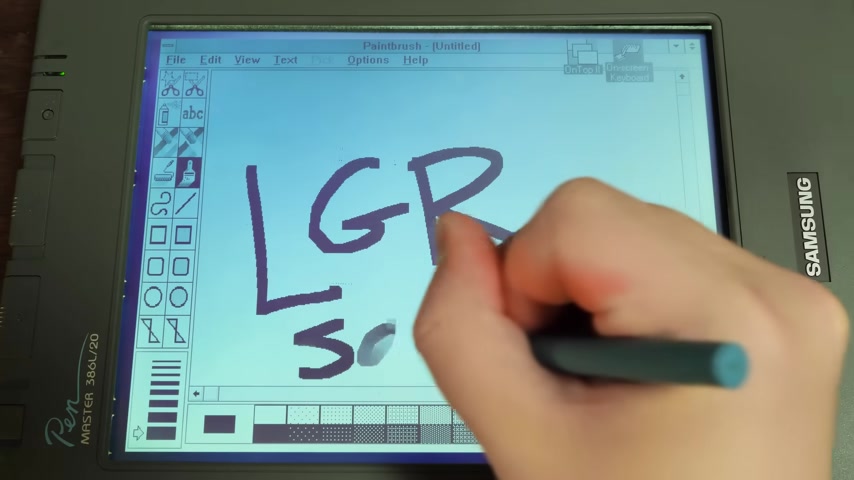
It was a portable touch screen computer with an integrated 20 megahertz 36 S L C P U and up to 20 megs of ram more than enough to take on most anything you'd care to throw at an early nineties tablet , which nowadays , I mean , it is mostly going to be solitaire and paintbrush .
Am I right ?
Sure .
It cost between four and five grand when it was new .
But come on screwing around with classic Windows .
Three applications using a touch screen and a stylist is just a giggle worthy spectacle , especially since it's on hardware .
That was absolutely at the forefront for the time period , rarely used by the average home computer user .
It's no surprise that a good number of the pen master machines from both Samsung and Grid ended up being sold directly to professionals instead of through general retail .
After all its price and functionality fit more in line with the needs of government , medical , business and education sectors , not the Rando at radio Shack who just wants to play Wolfenstein 3d .
Not to say you couldn't play Wolfenstein 3d on here .
It's certainly capable of doing so .
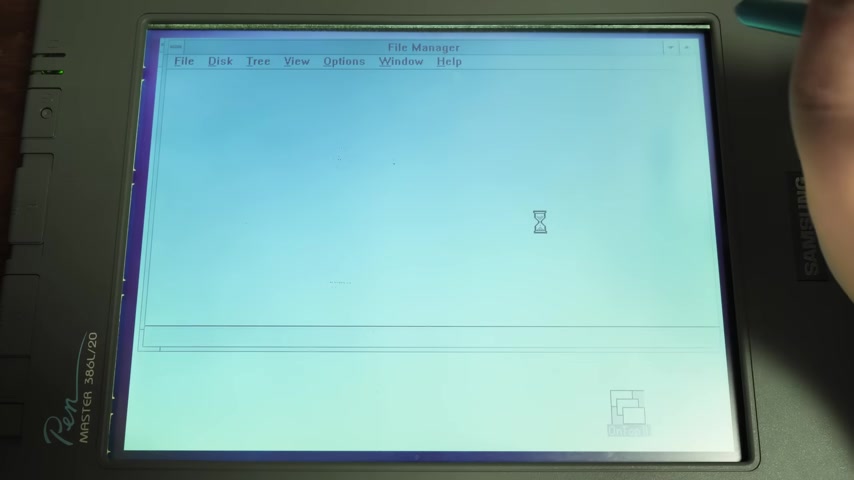
But there were 1000 cheaper and more suitable options for that in 92 .
And as much as I love to show something like Wolf 3d running on here .
Unfortunately , I ran into some roadblocks preventing that for one thing .
The 3.5 inch floppy drive , it came with no longer reads , diskets at all , making this rather concerning noise .
Any time you try and to make matters worse , the hard drive barely works either at this point crapping out seemingly at random .
This not only froze the system constantly , but the entire drive eventually refused to show up in the bios at all .
And yes , I've taken everything apart , receded all the things and put the machine back together half a dozen times .
But that cranky old 63 megabyte quantum Go drive just wants me to get off its lawn and let it rest in peace .
I ended up getting a blank refurbished one that works perfectly .
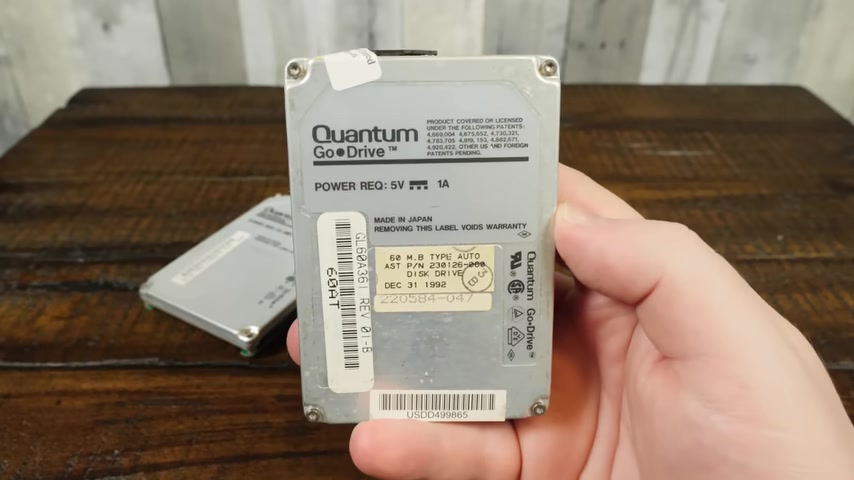
But even after days of trying , I haven't been able to get the old drive working again to make a backup and I don't have copies of the original software either .
Well , at least this gives us an excuse to gaze upon its delightful internals , which really looks a lot like a laptop smashed together without the keyboard and with some extra circuitry for the touch screen , speaking of which the pen master relies on a chip set by none other than Waco Limited , who made several pioneering pen controlled computing products and still sells digital drawing devices today .
Also making a stand out appearance is that lovely intel 386 S L 20 C P U with an accompanying socket ready to make use of a 387 math code processor .
And up above that , there's the small but densely populated power supply board right next to the internal PC speaker and the Tata TL 51 86 coin cell for the CMOS in real time clock .
Yeah .
Overall , I'd say Samsung did a nice job fitting so much into a relatively small package .
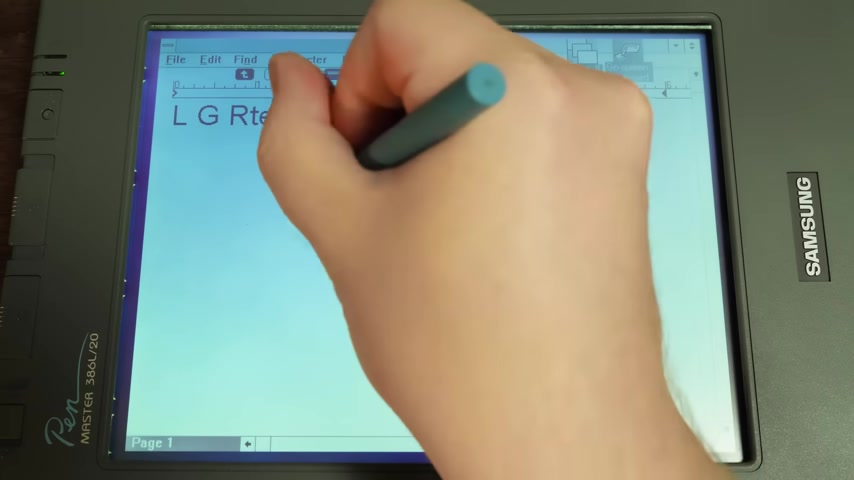
Considering the early nineties tech , they were working with the chunky battery 2.5 inch hard drive and full size I O ports bulk this thing up quite a bit .
There was a long way to go in portable computing tech that's for sure .
And that's about it for the Samsung Pen master , a fascinating early entry into the tablet PC marketplace .
The one that didn't make much of a lasting impression , it seems that was undoubtedly due in part to its limited distribution and lofty price point .
But also because this was Samsung's first tablet and one that was simply early to the tablet party in general .
Exciting as they were in 1992 tablets really didn't become a thing until the 2010 S .
And even then when Samsung released their first Android tablet , the Galaxy tab , I recall plenty of naysayers and derisive opinions , questioning who actually needed a tablet computer .
Samsung strikes me as one of those companies that throws every new form factor at the wall to see what sticks , even if the timing isn't exactly optimal .
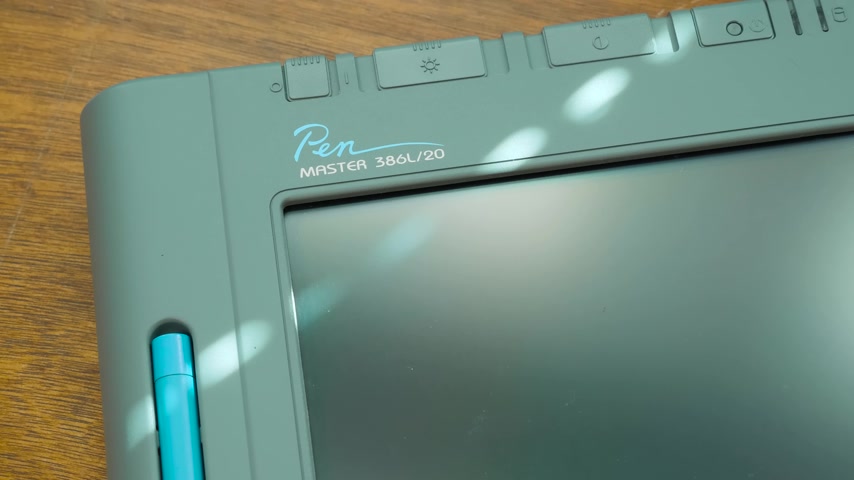
And the pen Master is an enjoyable example of that from all the way back in 1992 .
You know , I don't really have any profound point to make here except to say that I'm continually amused by the fast moving trends in tech and how quickly consumers collectively forget the numerous milestones along the way to where we are now forgotten devices like the pen master paved the way for the future , at least in some small part , decades in advance .
And for that , I think things like this deserve a second look .
If you enjoyed this , look at the pen master , might I suggest my video on the dauphin D T R one or any number of other bits of retro tech history ?
I cover a lot of stuff here on L G R as always though .
Thank you very much for watching .
Are you looking for a way to reach a wider audience and get more views on your videos?
Our innovative video to text transcribing service can help you do just that.
We provide accurate transcriptions of your videos along with visual content that will help you attract new viewers and keep them engaged. Plus, our data analytics and ad campaign tools can help you monetize your content and maximize your revenue.
Let's partner up and take your video content to the next level!
Contact us today to learn more.